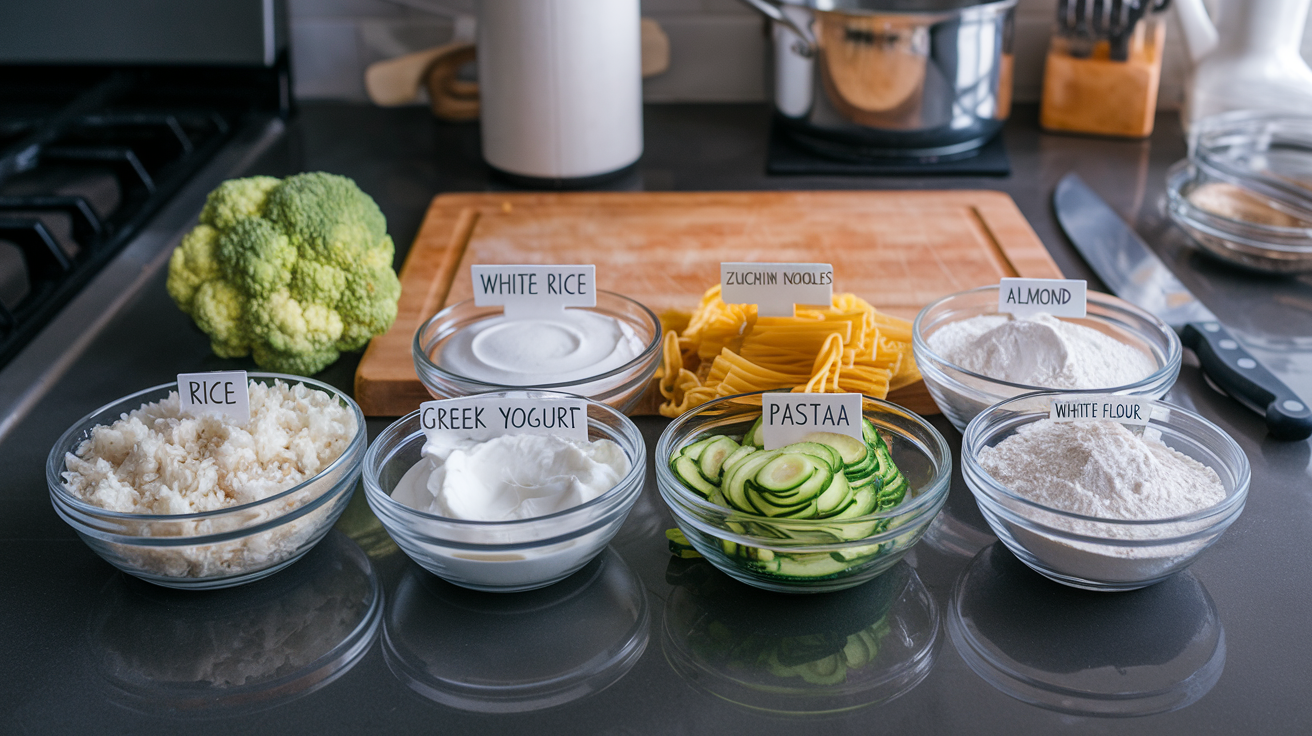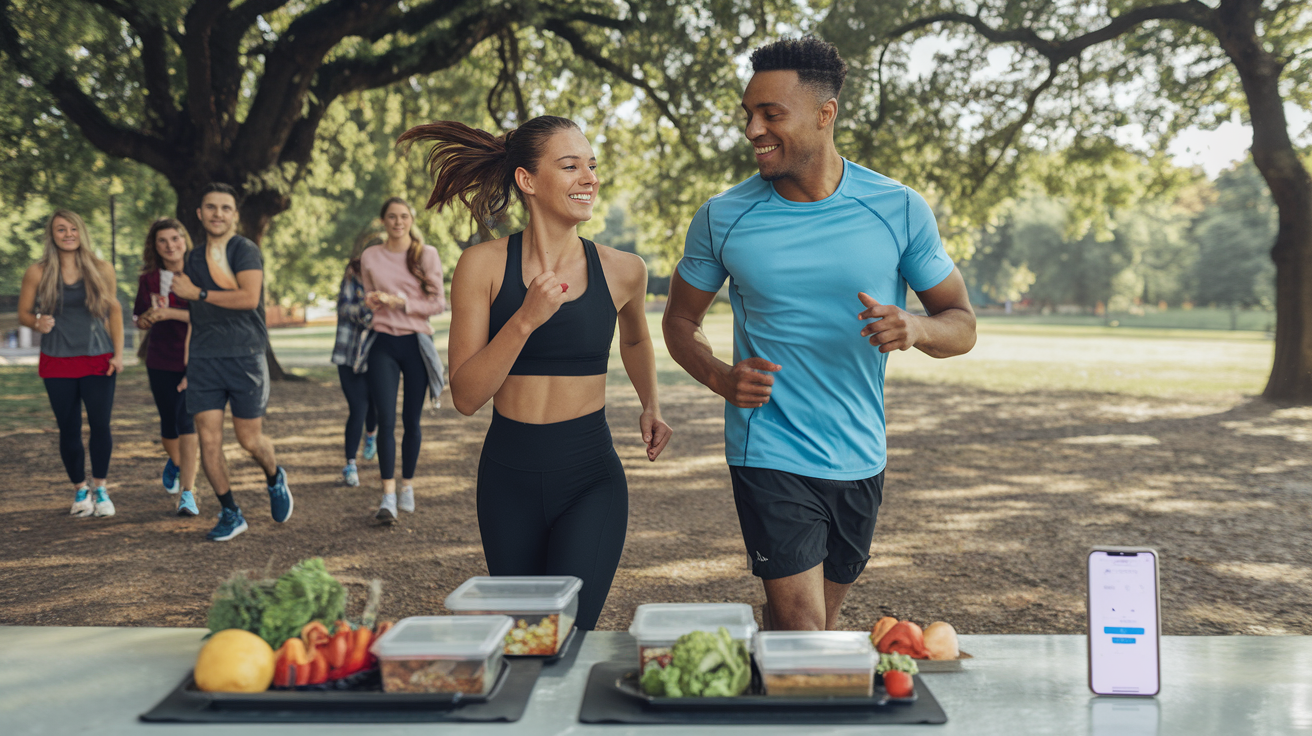How to Lose Weight Without Dieting: 7 Proven Strategies
You’ve probably heard it a million times – “just go on a diet.” But what if I told you that 95% of diets fail and most people regain the weight within 1-5 years? Brutal truth, right?
Weight loss without dieting isn’t just possible – it’s actually more sustainable. By making small, consistent lifestyle changes, you can drop pounds without that miserable restricted feeling.
The secret lies in understanding how weight loss actually works beyond the calorie-counting obsession. These 7 proven strategies for losing weight without dieting will transform how you think about your body and food.
But before we dive in, let me ask you something: what if everything you’ve been told about weight loss is actually working against you?
Creating a Mindful Eating Habit

Listen to Your Body’s Hunger Signals
Ever noticed how babies eat? They cry when hungry and stop when full. Somewhere along the way, we lost that natural ability. Time to get it back.
Your body sends clear signals about hunger and fullness – you just need to tune in. Before grabbing that snack, ask yourself: “Am I actually hungry, or just bored?” Physical hunger builds gradually and can come with a growling stomach or slight headache. Emotional hunger hits suddenly and craves specific comfort foods.
Try the hunger scale from 1 (starving) to 10 (uncomfortably full). Aim to eat at 3 or 4 and stop at 6 or 7. This simple check-in prevents both overeating and those energy crashes from waiting too long.
Eliminate Distractions During Meals
That phone scrolling while eating? It’s sabotaging your weight loss. When you’re distracted, you’ll eat roughly 25% more calories without even realizing it.
Create a sacred eating space:
- Turn off the TV
- Put your phone in another room
- Step away from your computer at lunch
Distracted eating is mindless eating. Your brain barely registers what went into your mouth, leaving you unsatisfied and reaching for more later.
Savor Each Bite for Better Satisfaction
Speed-eating is the enemy of weight management. Your brain needs about 20 minutes to register fullness, so slow down.
Try these simple tricks:
- Put your fork down between bites
- Chew each mouthful 20-30 times
- Notice the flavors, textures and aromas
Use Smaller Plates to Control Portions
The average dinner plate has grown from 9 inches to 12 inches over the decades. This visual trick fools your brain into thinking you need more food.
Downsize your dinnerware and watch portions naturally shrink. A full smaller plate feels more satisfying than a half-empty large one. Your eyes eat first, and they’re easily tricked.
Building a Sustainable Exercise Routine

Find Activities You Actually Enjoy
Exercise doesn’t have to mean struggling on a treadmill while watching the seconds tick by. The secret? Pick activities you actually look forward to doing. Dancing around your living room, hiking local trails, or playing tennis with friends all count. When you enjoy moving your body, you’ll stick with it naturally – no willpower required.
Try this: Make a list of physical activities that made you happy as a kid. Chances are, those same things might still bring you joy today.
Incorporate Movement Throughout Your Day
Fitness isn’t just about dedicated workout sessions. Those little movement opportunities throughout your day? They add up fast:
- Take phone calls while walking
- Use the stairs instead of elevators
- Park farther from store entrances
- Do counter push-ups while waiting for coffee to brew
- Stretch during TV commercials
These “movement snacks” burn calories without feeling like exercise.
Start Small and Build Consistency
Ambition kills exercise plans faster than anything. Seriously. Starting with manageable 10-minute sessions creates momentum that actually sticks. Your body and brain respond better to gradual changes than dramatic overhauls.
Focus on Strength Training for Metabolic Boost
Cardio gets all the attention, but strength training is your secret weapon for weight management. Building muscle increases your resting metabolic rate, meaning you burn more calories even when binging Netflix. Aim for 2-3 sessions weekly targeting major muscle groups.
Track Progress Beyond the Scale
The scale lies. Well, not exactly, but it doesn’t tell the whole story. Better metrics include:
- How your clothes fit
- Energy levels throughout the day
- Sleep quality
- Mood improvements
- Everyday activities becoming easier
These non-scale victories often matter more than numbers.
Prioritizing Sleep Quality

Prioritizing Sleep Quality
Sleep might be your secret weapon for weight loss. Most people chase fancy diets and brutal workouts, but they’re missing something huge – those precious hours when your head hits the pillow.
Establish a Consistent Sleep Schedule
Your body craves routine. Going to bed and waking up at the same time every day – yes, even weekends – trains your internal clock.
Try this: Pick realistic sleep and wake times. Stick to them for two weeks straight. Your body will start naturally winding down and waking up without that dreaded alarm.
Create an Optimal Sleep Environment
Your bedroom should be a sleep sanctuary, not a multipurpose zone.
The sleep-friendly bedroom checklist:
- Temperature: Keep it cool (65-68°F)
- Light: As dark as possible (blackout curtains work wonders)
- Sound: Quiet or consistent white noise
- Devices: None! The blue light from screens tells your brain “stay awake”
- Comfort: Invest in a good mattress and pillows
Understand the Weight-Sleep Connection
Sleep deprivation messes with your hunger hormones. When you’re tired, leptin (the “I’m full” hormone) drops while ghrelin (the “I’m hungry” hormone) spikes.
Ever notice how you crave carbs and sugar when exhausted? That’s your body desperately seeking quick energy. Studies show people who sleep less than 7 hours regularly eat about 300 extra calories daily.
Plus, when you’re tired, your willpower tanks. That donut becomes impossible to resist when you’re running on 5 hours of sleep.
Managing Stress Levels

Practice Daily Stress-Reduction Techniques
Stress and weight gain go hand in hand. When you’re stressed, your body pumps out cortisol, which can trigger cravings for sugary, fatty foods and make your body store more belly fat.
The good news? Even five minutes of stress relief can help. Try these quick fixes:
- Deep breathing: Take 10 slow breaths when you feel overwhelmed
- Quick walk: Even around your office or home
- Stretch break: Roll your shoulders, touch your toes
- Green tea break: Contains L-theanine that calms your brain
Recognize Emotional Eating Triggers
We’ve all been there – reaching for ice cream after a tough day. Emotional eating isn’t about hunger; it’s about comfort.
Start by tracking when you eat without hunger. Notice patterns:
- What feelings push you toward food?
- What times of day are hardest?
- Which people or situations trigger stress eating?
Just naming your triggers cuts their power in half.
Build Healthy Coping Mechanisms
Replace food-based comfort with alternatives that actually work:
- Call a friend instead of opening the fridge
- Create a “stress kit” with non-food items (stress ball, essential oils)
- Develop a “pause ritual” before eating when stressed
- Find physical outlets: dancing, walking, even cleaning
Try Mindfulness and Meditation
Your mind and waistline are connected. Meditation helps you develop awareness around eating habits without judgment.
Start small with these beginner steps:
- Use a free app for 5-minute guided sessions
- Practice “mindful eating” with one meal daily
- Try body scan meditations before bed
- Set reminders to check in with your hunger levels
The weight loss happens naturally when you manage stress better.
Hydrating Strategically

Drink Water Before Meals to Reduce Hunger
Want a dead-simple trick to eat less without feeling deprived? Grab a glass of water 20-30 minutes before mealtime. This works like magic because your brain sometimes confuses thirst with hunger. A study in middle-aged adults found that drinking 16 ounces of water before meals helped them lose 44% more weight over 12 weeks compared to those who didn’t.
The beauty of this strategy? It costs nothing and takes zero extra time in your day. Just fill up that water bottle and drink before your fork hits the plate.
Replace Sugary Beverages with Water
Those liquid calories are sneaky weight saboteurs. The average soda packs about 150 calories per can with zero nutritional value. Switch to water, and you could cut 500+ calories daily without changing anything else.
Think water is boring? Try:
- Adding fresh lemon, lime, or cucumber slices
- Freezing berries in ice cubes
- Using sparkling water for fizz without the sugar
Your body will thank you – not just for the calorie reduction but also because sugary drinks cause insulin spikes that trigger fat storage.
Use Hydration to Boost Metabolism
Water isn’t just filling you up – it’s literally powering your body’s fat-burning engine. Drinking cold water forces your body to warm it up, burning extra calories in the process.
Proper hydration helps your kidneys flush waste efficiently, meaning your liver can focus on its primary job: metabolizing fat. Aim for that classic eight 8-ounce glasses daily, but adjust based on your activity level and climate.
Feeling hungry mid-afternoon? Try water first. Staying properly hydrated can boost your metabolism by up to 30% for an hour after drinking.
Making Simple Food Swaps

Choose Whole Foods Over Processed Options
Swap out those processed snacks for real, whole foods and watch the magic happen. Processed foods are loaded with hidden sugars, unhealthy fats, and preservatives that mess with your metabolism and hunger signals.
Instead, grab an apple instead of apple juice. Munch on roasted nuts rather than flavored chips. Your body knows what to do with real food – it’s been processing it for thousands of years.
Whole foods naturally contain fiber that keeps you full longer and prevents those energy crashes that send you hunting for more calories. Plus, you’ll automatically cut hundreds of calories without feeling like you’re on a diet.
Increase Protein Intake for Satiety
Hungry an hour after eating? You probably didn’t get enough protein. Adding protein to every meal is like installing a hunger shield.
Eggs for breakfast instead of cereal can keep you satisfied until lunch. Toss some chicken or beans into that salad. Greek yogurt makes a filling snack that won’t leave you wanting more in 20 minutes.
Protein requires more energy to digest, so you actually burn more calories processing it. It also preserves muscle mass while you’re losing fat – critical for keeping your metabolism humming.
Add Volume with Vegetables
Want to eat big portions without the calorie overload? Vegetables are your secret weapon.
Fill half your plate with veggies and you’ll naturally eat fewer calories from other foods. They’re mostly water and fiber, so they fill your stomach without filling out your waistline.
Try cauliflower rice instead of regular rice, zucchini noodles in place of pasta, or load your sandwich with extra lettuce and tomato. You’ll feel like you’re eating more while actually consuming less.
Select Nutrient-Dense Snacks
Snacking isn’t the enemy – poor snack choices are. Swap those empty-calorie treats for nutrient powerhouses.
A handful of berries and nuts delivers antioxidants, healthy fats, and protein. Sliced bell peppers with hummus provides crunch, fiber, and satisfaction. Dark chocolate (70%+) offers legitimate health benefits when you need something sweet.
These swaps provide actual nutrition your body can use, unlike processed snacks that just spike your blood sugar and leave you hungry again.
Building a Supportive Environment

Surround Yourself with Positive Influences
Who you hang out with matters more than you think. When friends and family support your weight loss journey, you’re twice as likely to succeed. Find your weight loss buddies – people who’ll go for walks with you or swap healthy recipes.
Ditch the naysayers. You know who they are – the ones pushing dessert saying “one bite won’t hurt.” They might not mean harm, but their habits can derail yours.
Online communities work wonders too. Join Facebook groups or Reddit threads where people share similar goals. Having cheerleaders in your corner makes tough days easier.
Restructure Your Home for Healthy Choices
Your kitchen shouldn’t be a minefield of temptation. Clean out your pantry – toss the ultra-processed snacks and stock up on easy-to-grab healthy options.
Put fruit in visible spots. When hunger strikes, you’ll reach for what you see first. Hide treats in hard-to-reach places if you can’t part with them completely.
Rearrange your living space to encourage movement. Keep resistance bands by the couch or yoga mats visible. Small visual cues trigger healthy actions.
Develop Sustainable Habits That Last
Quick fixes fail because they’re exactly that – quick. Build tiny habits instead. Start with drinking water before meals or taking five-minute walks after dinner.
Track what’s working without obsessing. Notice how your energy improves, not just the scale number.
The goal isn’t perfection – it’s progress. Create a lifestyle you actually enjoy. When healthy choices feel good rather than like punishment, they stick around long after motivation fades.

Achieving your weight loss goals doesn’t have to involve restrictive dieting or extreme measures. By incorporating mindful eating habits, finding enjoyable exercise routines, and prioritizing quality sleep, you can create sustainable lifestyle changes that naturally support weight management. Simple adjustments like managing stress, staying well-hydrated, making smarter food choices, and surrounding yourself with supportive people can dramatically improve your results.
Remember that lasting weight loss comes from consistent, small changes rather than quick fixes. Start by selecting just one or two strategies from this guide and gradually build new habits. Your journey to better health is personal and unique—focus on progress rather than perfection, and celebrate every positive step you take toward your wellness goals.


